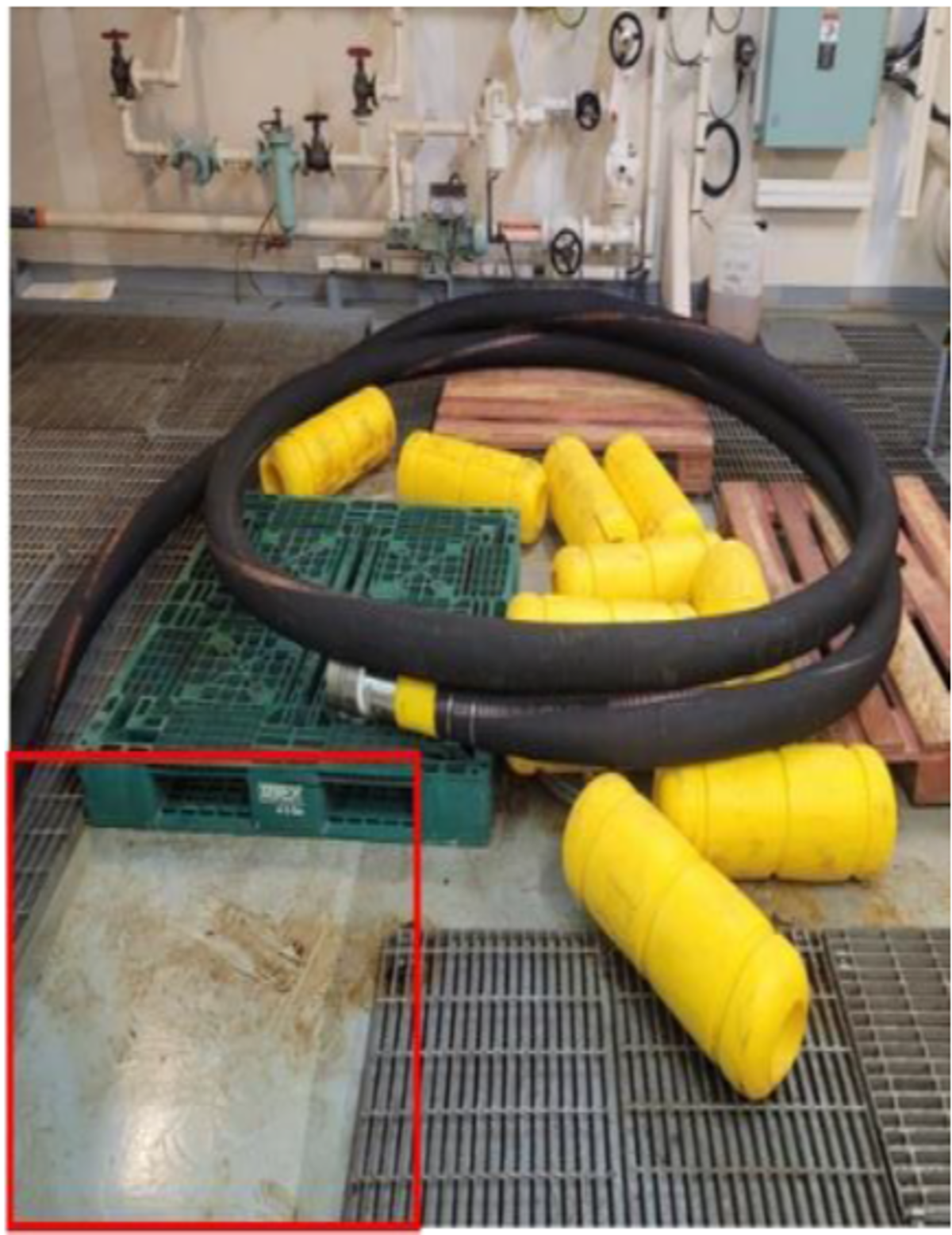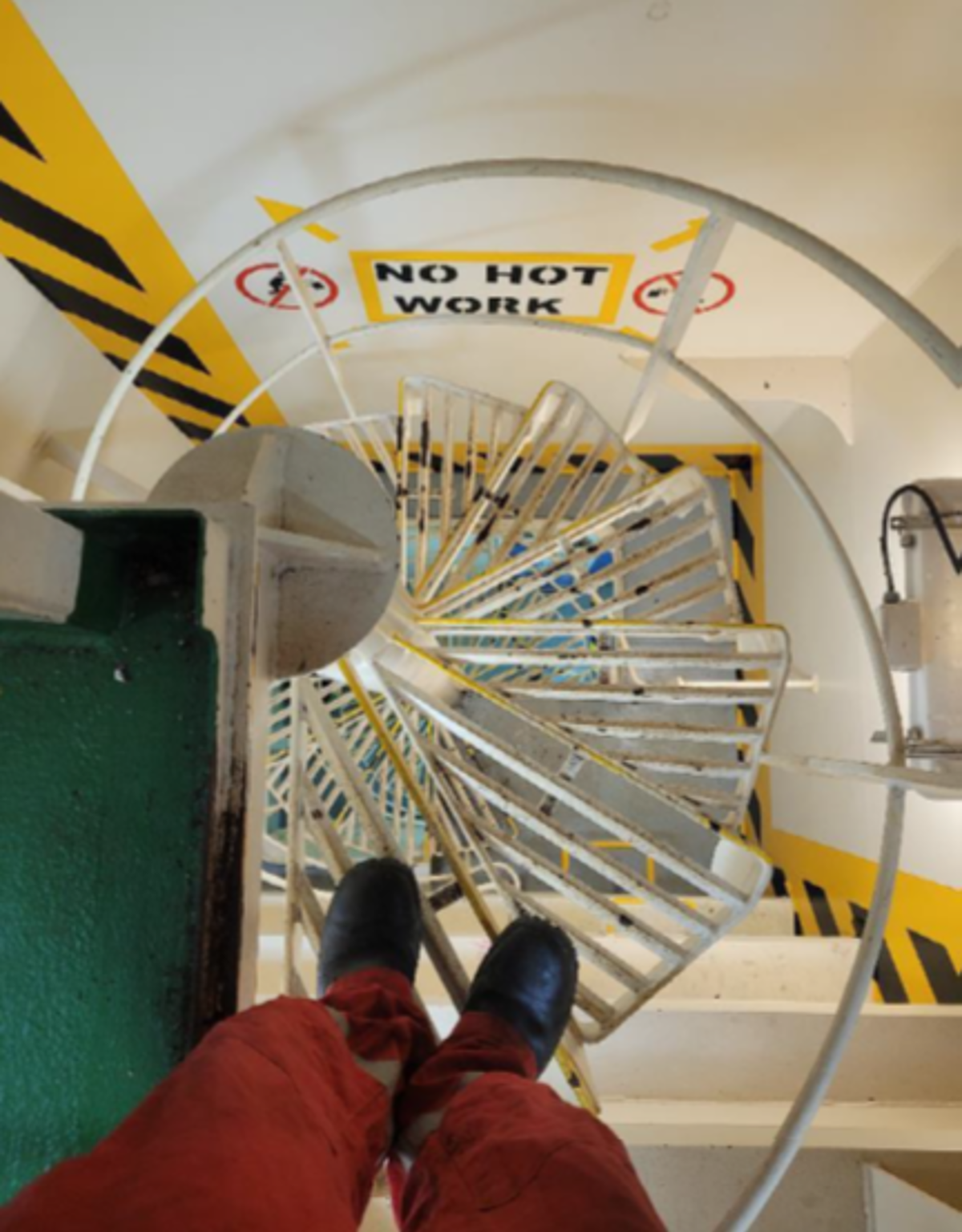Serious LTI – Crew member slipped on deck breaking his leg
- Safety Flash
- Published on 27 March 2023
- Generated on 20 December 2025
- IMCA SF 08/23
- 2 minute read
Jump to:
Three engineering crew members were involved in the manual handling of a bunker hose from an upper storage area to a lower deck storage area accessed via a spiral staircase.
What happened?
One of the engineers slipped on a greasy area of the deck breaking his right leg (fibula or calf bone) in the fall.
The spiral ladder did not allow evacuation by stretcher. Fortunately, however, the injured person was conscious and was able to assist the rescue team and go up the stairs.
Our Member noted that a later drill highlighted that in the case of an unconscious casualty, the safest rescue route would have been to unbolt a vertical hatch leading to the bottom carousel area, which would have proved to have been time consuming.

Greasy area where engineer slipped

Spiral ladder which would not have allowed passage of a stretcher
What went wrong?
- The area where the engineer slipped was an isolated spot that did not have any grating installed on the deck. It was also contaminated with grease and water from a previous task.
- The engineers were interrupted in their task by the requirement to conduct another task elsewhere.
- The bunker hose was routed vertically. As a result, residual water from within the hose was able to escape and pool on the deck below where crew accessed the storage area.
- The presence of grating nearly everywhere gives a false perception of a non-slippery surface.
- A Manual Handling Assessment was not considered for the task.
Learnings
- If available, place caps on end of hoses to eliminate water spillage.
- Ensure non-slip deck coating is applied in all exposed areas in storage rooms, and assess all other work and storage areas and apply same coating where required.
- Develop a manual handling assessment for the movement of bunkering hoses, incorporating the use of mechanical lifting aids wherever possible.
- Rescue equipment available onboard for an unconscious casualty – a stretcher – was not suitable for a rescue through the spiral ladders.
- Identify all areas onboard the vessel presenting difficult rescue (with limited access/egress) and consider additional rescue drills in all identified areas complete with designated rescues plans.
Related safety flashes
-
IMCA SF 02/22
20 January 2022
-
IMCA SF 09/19
3 May 2019
-
-
IMCA SF 31/17
15 December 2017
-
IMCA Safety Flashes summarise key safety matters and incidents, allowing lessons to be more easily learnt for the benefit of the entire offshore industry.
The effectiveness of the IMCA Safety Flash system depends on the industry sharing information and so avoiding repeat incidents. Incidents are classified according to IOGP's Life Saving Rules.
All information is anonymised or sanitised, as appropriate, and warnings for graphic content included where possible.
IMCA makes every effort to ensure both the accuracy and reliability of the information shared, but is not be liable for any guidance and/or recommendation and/or statement herein contained.
The information contained in this document does not fulfil or replace any individual's or Member's legal, regulatory or other duties or obligations in respect of their operations. Individuals and Members remain solely responsible for the safe, lawful and proper conduct of their operations.
Share your safety incidents with IMCA online. Sign-up to receive Safety Flashes straight to your email.